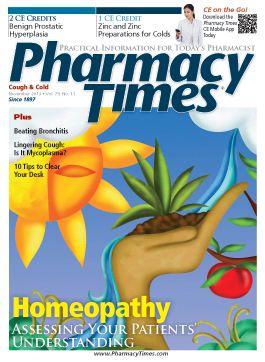Publication
Article
Pharmacy Times
Caution: Don't Confuse Lupron Depot-Ped with Lupron Depot-3 Month
Author(s):
The Institute for Safe Medication Practices has received a number of reports about mix-ups between Lupron Depot-Ped and Lupron Depot-3 Month.

The Institute for Safe Medication Practices (ISMP) has received a number of reports about mix-ups between Lupron Depot-Ped (leuprolide acetate; AbbVie Inc) 11.25 mg and Lupron Depot-3 Month 11.25 mg. Lupron Depot-Ped 11.25 mg is a 1- or 3-month duration gonadotropin-releasing hormone agonist used in the treatment of central precocious puberty in pediatric patients. Unfortunately, it shares the same 11.25-mg strength as Lupron Depot-3 Month, which is administered every 3 months to women with endometriosis or uterine leiomyomata (fibroids). Both products are available in a kit with a prefilled, dual-chamber syringe.
On several occasions, a hospital-based outpatient pharmacy dispensed to pediatric patients Lupron Depot-3 Month 11.25 mg in place of Lupron Depot-Ped. On these occasions, pharmacy staff selected the wrong computer code during order entry and then, when referencing the patient drug profile for monthly refills, continued to select the 3-month dosage form instead of the monthly pediatric dosage form. Thus, 1 computer selection error precipitated a series of errors. The drugs were taken to pediatrician offices where, in every case, nurses administering the drug also failed to catch the error. In all, errors reached 5 different patients for up to 4 months. The 3-month adult dosage form resulted in absorption of the child’s dose over 3 months rather than 1 month. At the time of the report, the facility was still evaluating patients, some of whom had been prematurely considered treatment failures.
More recently, ISMP received a report from a different hospital-based outpatient pharmacy that dispensed Lupron Depot-Ped 11.25 mg in place of Lupron Depot-3 Month 11.25 mg. The electronic prescription initially placed by the provider did not correctly populate in the pharmacy system, causing the pharmacy technician to transcribe the prescription incorrectly. As a result, Lupron Depot-Ped 11.25 mg was dispensed to the patient. When the patient returned 3 months later for a refill prescription, she again was dispensed Lupron Depot-Ped 11.25 mg. The pharmacist dispensed the pediatric formulation thinking it was the right medication because the patient had received the same formulation in the past. The patient denied counseling during this second encounter. A few days later, the pharmacist filled a prescription for Lupron Depot for a different patient and realized that several formulations are available. Realizing that the patient who was given a Lupron Depot-Ped 11.25 mg kit received it in error, the pharmacist notified the nurse, who informed the physician. The patient was contacted and made aware of the error.
A number of factors have contributed to these incidents, including similarities in drug names, strengths, and packaging; pharmacy staff unfamiliarity will the various Lupron formulations; and electronic prescribing system and pharmacy computer order entry system interface problems. It is important for pharmacies and other health care organizations to evaluate the current strategies for reducing the risk of mix-ups.
To prevent these errors, educate staff and label storage shelves with warnings about dosage mix-ups. Consider building computerized warning messages that alert pharmacy staff to the different dosage forms and strengths. Do not cover critical information on the manufacturer’s container label with a pharmacy-generated label, auxiliary label, or price sticker. Provide face-to-face patient counseling during the initial dispensing and refill. It is crucial to speak to the patient to help further elucidate (1) information that may not be available in the patient’s profile, (2) the directions for taking the medication, and even (3) information about the prescription itself. Prescribers can also help by providing patients with a clearly marked copy or “voucher” of the prescription that lists the medication name, dose, and directions that the patient can use to check the dispensed prescription at the point of sale.
Dr. Gaunt is a medication safety analyst and the editor of ISMP Medication Safety Alert! Community/Ambulatory Care Edition.
- See more at: http://www.pharmacytimes.com/publications/issue/2013/October2013/APAP-An-Error-Prone-Abbreviation#sthash.TRPns4cj.dpuf
Dr. Gaunt is a medication safety analyst and the editor of ISMP Medication Safety Alert! Community/Ambulatory Care Edition.
- See more at: http://www.pharmacytimes.com/publications/issue/2013/October2013/APAP-An-Error-Prone-Abbreviation#sthash.TRPns4cj.dpuf
Dr. Gaunt is a medication safety analyst and the editor of ISMP Medication Safety Alert! Community/Ambulatory Care Edition.
Dr. Gaunt is a medication safety analyst and the editor of ISMP Medication Safety Alert! Community/Ambulatory Care Edition. - See more at: http://www.pharmacytimes.com/publications/issue/2013/October2013/APAP-An-Error-Prone-Abbreviation#sthash.TRPns4cj.dpuf







